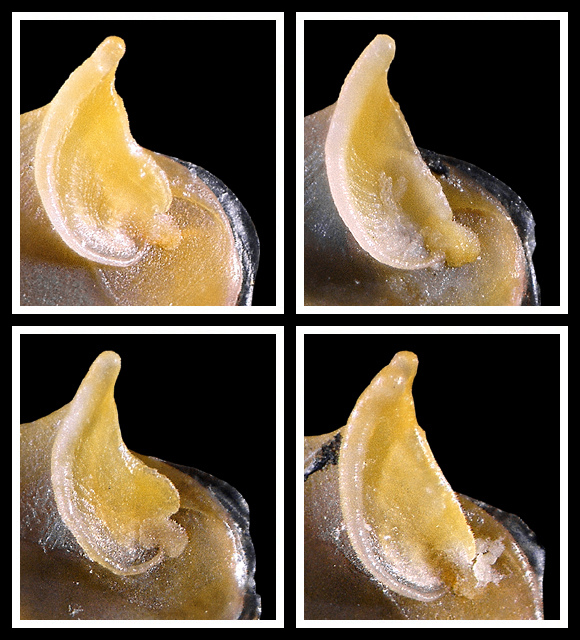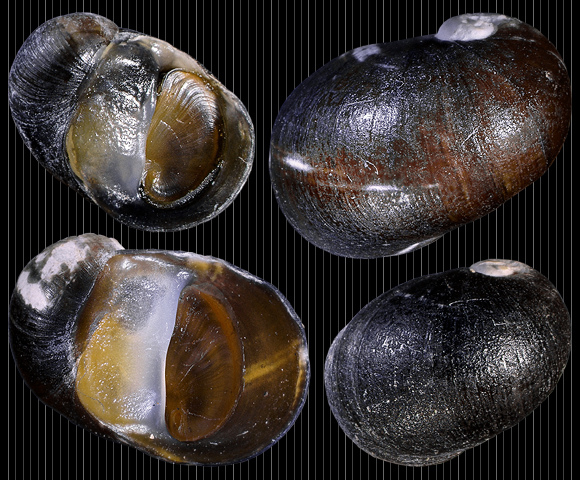(Récluz, 1852)
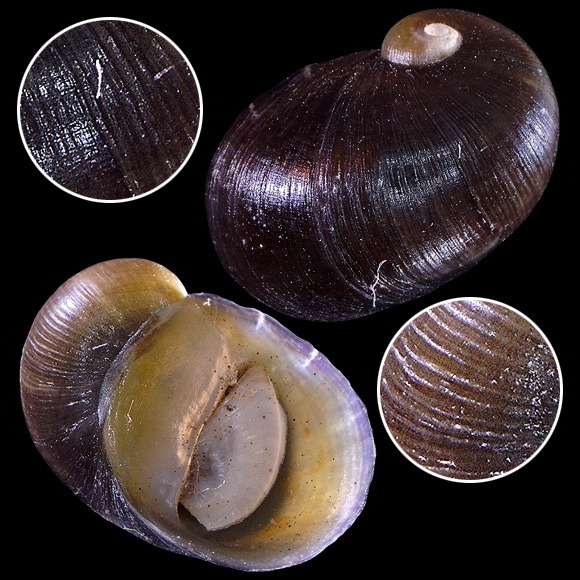
Basionym: Neritina thermalis.
Shell « transversely ovate, finely striated longitudinally (across the extent of the whorls), of a brown a little vinous; of 2,5-3 whorls slightly but constantly convex apically. Spire lateral, sagging, with corroded summit posteriorly placed; aperture of a pale bluish brown; [columellar] edge septiform, compressed, yellowish, with a whitish margin, entire; labrum thin, lined with a thin brown band on the rim. » – C. A. Récluz: “Recensement des Nérites (sous-genre des Néritines) de la France continentale”, Journal de Conchyliologie 3(3), Paris 1852, p. 292.
A specimen from the emergence of the Aygo Tebio. 8,2mm.
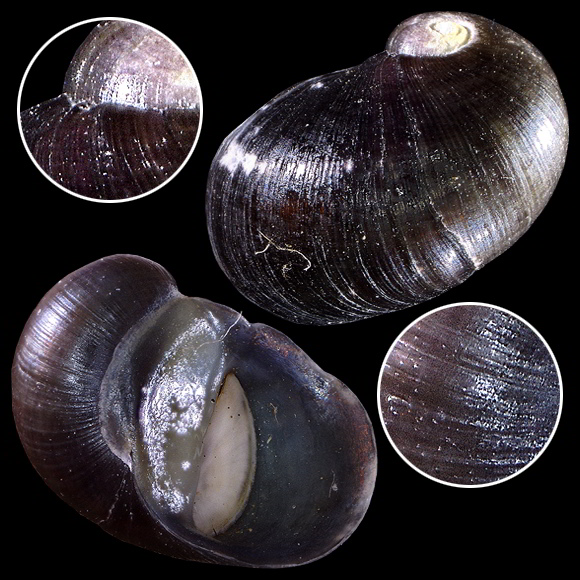
« This species seems restricted to this one locality. I have not been able to meet it again in any thermal springs of the Pyrenees, not even in the many other founts of Bagnères. Hot water seems essential to this Neritine; it swarms in the pond where the thermal water is born; it abounds still in the creek which results from it as long as the water retains the heat there; but as new spring waters flow into the brook, the Neritine becomes more rare, and soon there are only a few individuals lost or driven by the current. » – N. Boubée: Bulletin d’histoire naturelle de France sect.3, Paris 1833, p.12.
Same spot. 8,3mm.
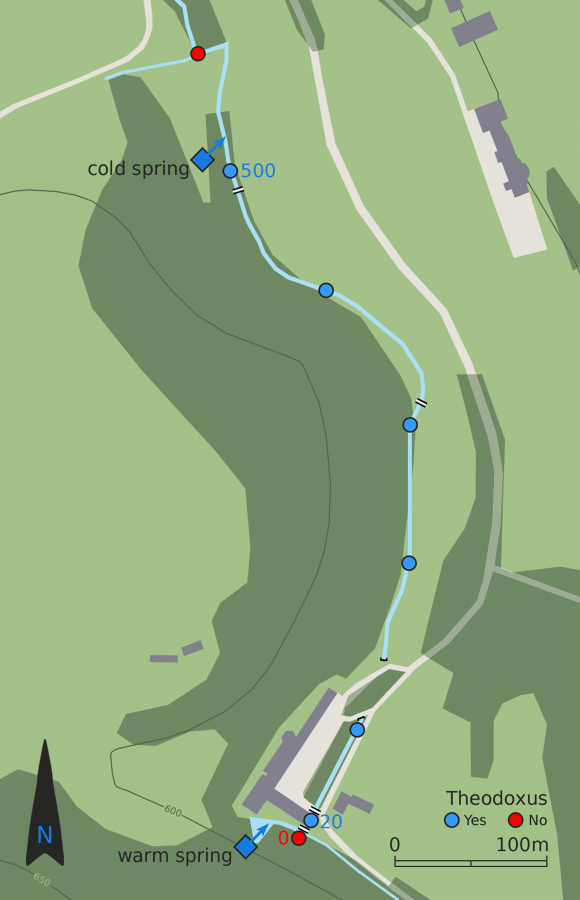
Original data provided by Y. Patois (FR).
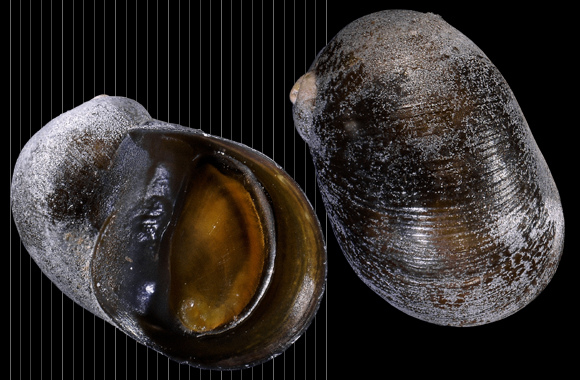
The description of thermalis given by Dupuy is based on comparisons with fluviatilis. The name, introduced by N. Boubée, is considered by Dupuy as a synonym of prevostiana. « Shell similar to the previous one [fluviatilis], but a bit more extended transversely, and of a uniform blueish-black colour, without the lines that one can always see in the previous species. » – D. Dupuy: Histoire naturelle des mollusques terrestres et d’eau douce qui vivent en France, paris 1847-1852, p.594. Dupuy reports that the animal of thermalis is black and not whitish or yellowish as fluviatilis.
A specimen collected at about 500m from the emergence, just upstream the cold spring. 6mm. All the shells are naturally covered with these minute encrustations.
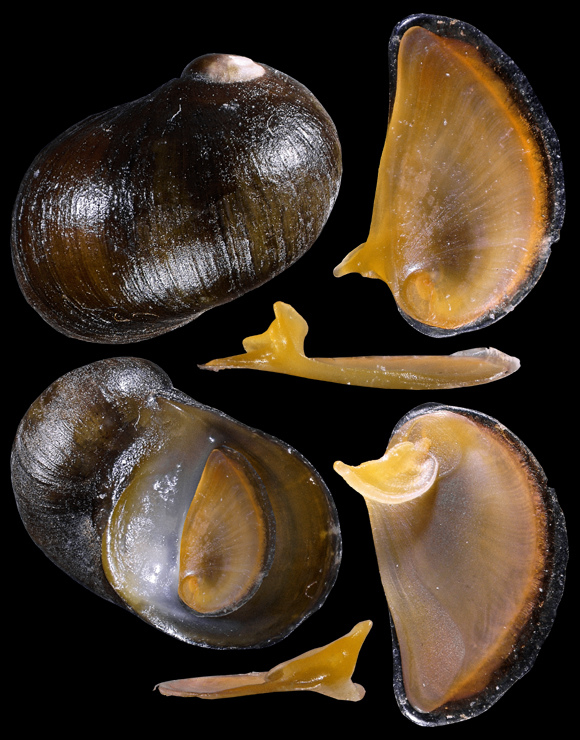
Abbot Dupuy, who is one of the figures of French malacology, collected many specimens of thermalis, some of which are now preserved in the Natural History Museum of Toulouse. As mentioned supra, he identified this species as Neritina prevostiana, which, in his time, was often considered as an inhabitant of the French waters, similar to the danubian population. Abbot Dupuy suggested, however, that prevostiana could be only a variation of fluviatilis (Dupuy 1851). He wrote notably (p.594): « Operculum entirely similar to that of the previous species [which was fluviatilis, p.591] », an observation that will be quoted by Récluz.
Dupuy, Dominique: Histoire naturelle des mollusques terrestres et d’eau douce qui vivent en France, Paris 1847-1852, p. 593 & plate XXIX, fig.2.
Dupuy, Dominique: Histoire naturelle des mollusques terrestres et d’eau douce qui vivent en France, Paris 1847-1852, p. 593 & plate XXIX, fig.2.
Large adult collected at about 400m from the emergence. 8,2mm.
The operculum can vary in colour but it remains that of fluviatilis.
